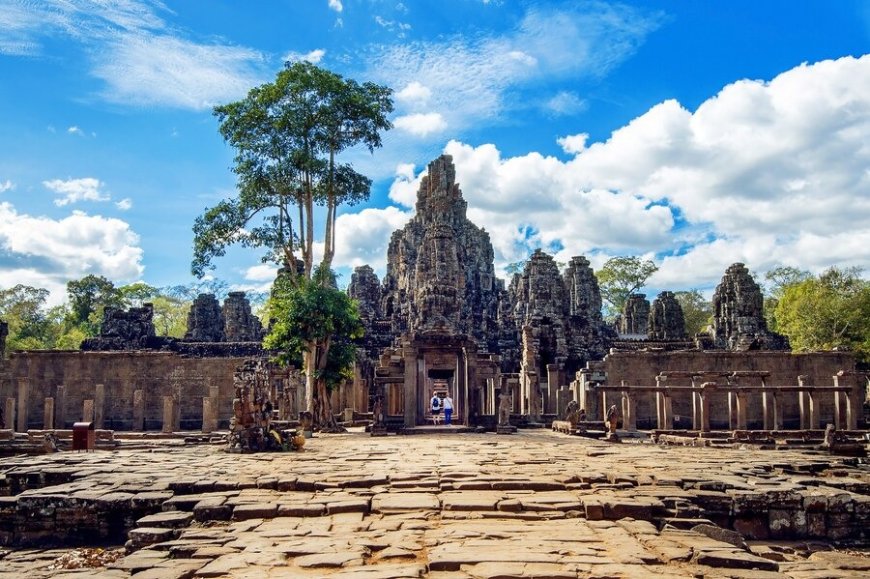Angkor Wat: From Hindu Temple to Buddhist Monument
Angkor Wat is a Hindu Buddhist temple complex in Cambodia, a country in Asia. According to Guinness World Records, it was the largest religious structure in the world.

It was originally constructed in 1150 CE; the temple is dedicated to Vishnu. At the end of the century, it was changed into a Buddhist temple.
Angkor Wat was constructed in the early 1100s as a monument to the mighty King Suryavarman II and as his tomb. This temple, dedicated to the god Vishnu, is immense—over a square mile in area. Its walls are adorned with detailed carvings in the form of bas-reliefs, showcasing scenes from the Indian epic, the Ramayana, as well as depicting episodes from the life of Suryavarman II.
This temple has 400 acres of area. This temple is with Khmer architecture.
Myths about this temple:
In the 13th century, the Chinese traveler Zhou Daguan recorded the legend of some who believed that Angkor Wat was magically constructed one night, as if constructed by a divine architect. As early as 1622, a poem in the Khmer language praised the beauty of Angkor Wat with a tale about its construction as a celestial palace for Preah Ket Mealea, a legendary Khmer king, by the Hindu god Preah Pisnukar or Vishvakarman. Moreover, in the 17th century, the Japanese believed that the temple was, in fact, the site of the famous Jetavana garden of the time of the Buddha himself, originally located in Magadha, India. Another tradition holds that Angkor Wat was built by Indra as a marvelous residence for his son Precha Ket Mealea.
Tourism:
Angkor Wat has garnered a great deal of international attention and millions of visitors, thereby being a pivotal symbol of Cambodia. Its image has become so deeply etched with Cambodian identity that it has appeared on the Cambodian national flag since its first version in 1863.
Since 1990 it has become a major tourist destination. There were nearly 7700 visitors to this temple by 2004 from 1993. Government figures 5,00,000 foreign tourists visited in that year, 50% of visitors are foreign visitors in Cambodia. In 2007, visitors reached up to a million, and in 2013 reached up to two million, and in 2018 they reached up to 2.6 million. This was rapidly increasing.

Hinduism to Buddhism:
His wife, Indratevi, was a devout Mahayana Buddhist who inspired the king to convert the temple to Buddhism. Angkor Wat slowly turned into a Buddhist site whereby many Hindu sculptures were replaced by Buddhist artwork.
On the other source, it was When the Cham people from Vietnam invaded Angkor in 1177, King Jayavarman VII (ruled 1181–1220) believed that the Hindu gods had let him down. Therefore, when he constructed his new capital close to there, Angkor Thom, he chose to dedicate it to Buddhism.

 Ellofacts
Ellofacts 





